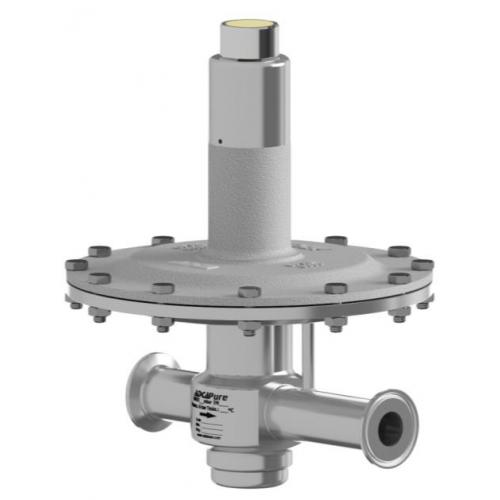Sanitary tank blanketing regulators BKR2
(Low pressure reducing valve)
Tank blanketing valves are commonly used in tank storage systems to prevent and protect against explosions (preventing flammable liquids from leaving the vessel), to control product contamination against external air that may fill the vapour space, to reduce evaporation losses (hence production losses), to reduce internal corrosion (caused by air and moisture) and to prevent a vacuum state.
The blanketing process consists of covering the stored medium, usually a liquid, with a gas (usually N2).
- Compact design.
- Non-rising adjustment knob.
- FDA / USP Class VI compliant seals.
STANDARD SURFACE FINISH
- Body and internal wetted parts: ≤ 0,51 micron Ra - SF1.
- Body exterior: ≤ 0.76 micron Ra - SF3.
- Cover: internal machined; external as cast iron.
- For other surface conditions, see IS PV20.00 E - Technical information.
- Ultrasonic cleaning.
- Leakage line connection.
- Dome loading.
- Top cap (adjusting screw with cover).
- Pressure gauge connection on the body.
- External detection line connection (recommended for low set pressures < 10 mbar or high flow rates).
- Vacuum cleaning.
- Hastelloy wetted parts.
- ATEX version.
- Compressed air, nitrogen and other construction compatible gases.
- BKR2 - low pressure regulator.
- 1"; DN 25.
- 5 to 10 mbar; 10 to 50 mbar; 20 to 200 mbar; 50 to 500 mbar; 5 to 4000 mbar (with dome).
- ASME BPE, DIN and ISO flanges.
- EN 1092-1 PN 16 flange.
- Others on request.
- Vertical installation is recommended, to allow for drainage, or horizontal as close to the process as possible to avoid long pipe runs and flow restrictions.
- See IMI - Installation and Maintenance Instructions.
- Assembly and packaging in a clean room certified to ISO 14644-1. The product is finished covered and sealed with recyclable heat-shrinkable plastic film to avoid contamination.

